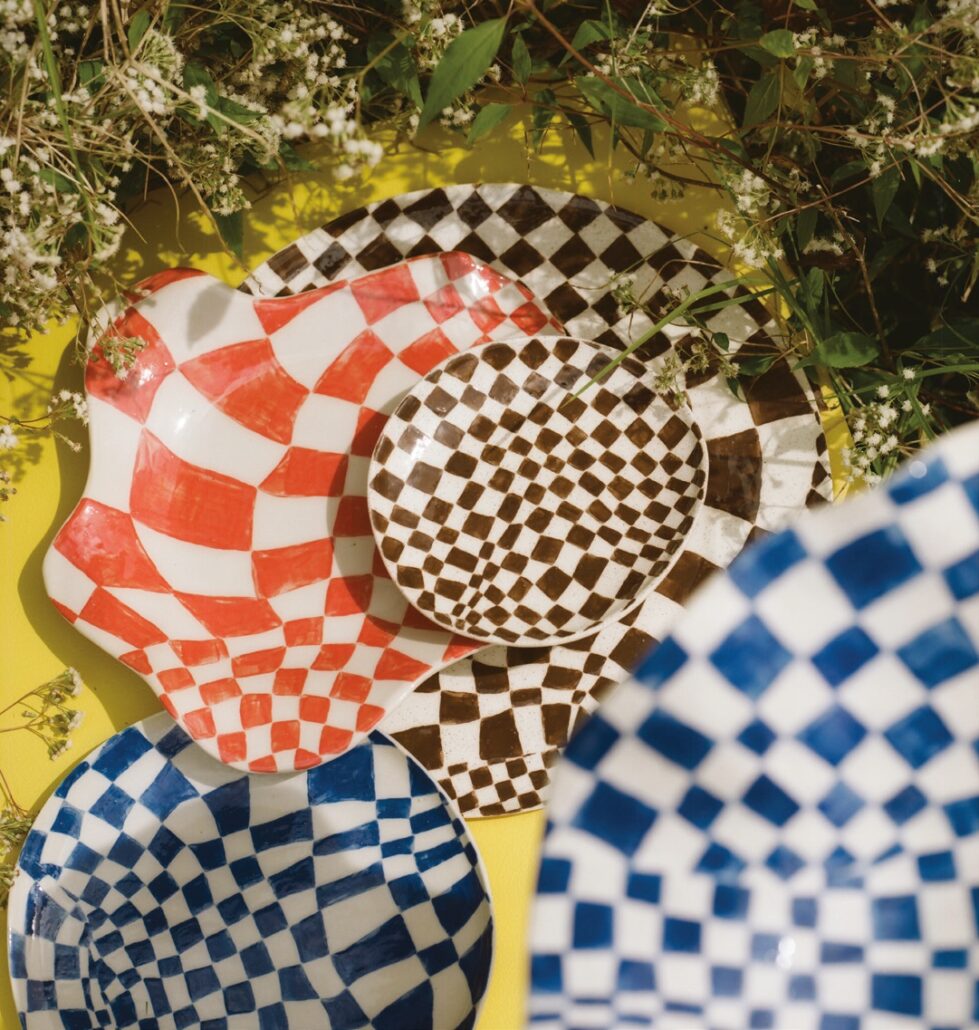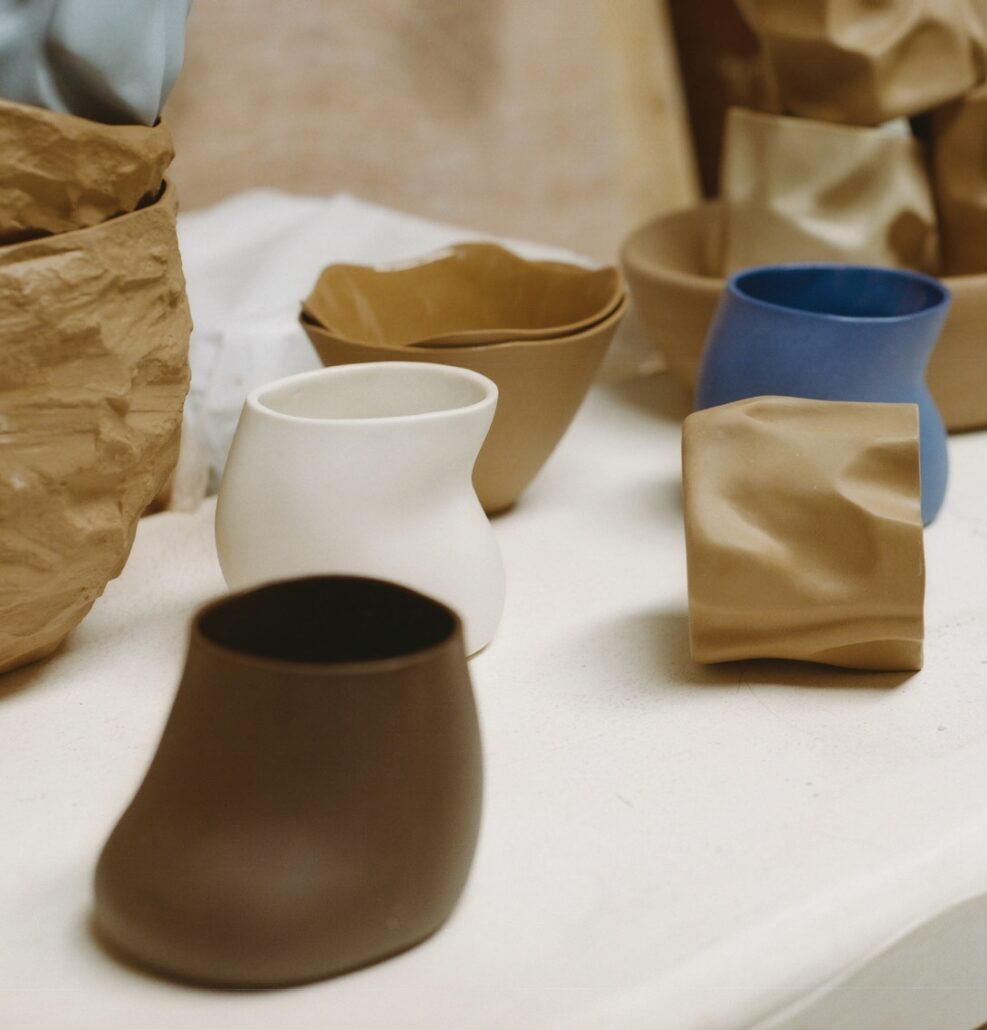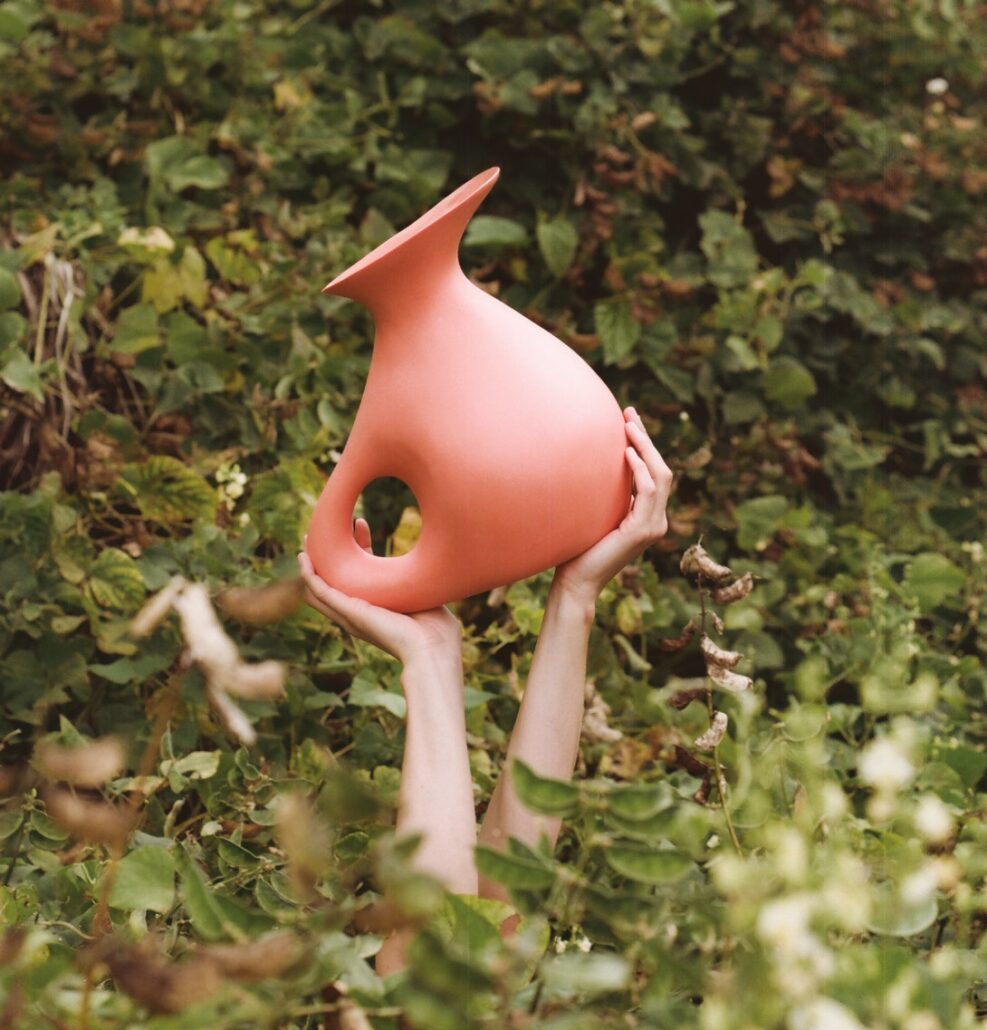Tell us about yourself and how softedge came about?
The road to this point has been a little divergent and multifaceted. In true millennial style I’ve worn a few hats this past decade. At 17 I moved to Melbourne and enrolled in architecture at RMIT. After finishing that first degree I worked in a few practices and as a research assistant before eventually taking some time to travel and consider my next move. After six months travelling, and a spritz or two somewhere in Milan, I sat myself down and applied for art school on a whim. A few months later I found myself back in Melbourne starting at the VCA. I really loved aspects of art school, particularly the six months I spent studying at the Glasgow School of Art but found some of the teaching methods a little stifling. As a result, I sought refuge and experimentation in the workshops – always trying to learn some new skill, letting materials and methods lead the way.
It was during this time that I first started pushing clay around which along with casting became regular features in my practice. Fast forward to 2019, I had spent the three years following art school working full time as part of the curatorial team at RMIT’s Design Hub Gallery and very little time making my own work. It was time for a change. I thought a Masters of Art in London was my next move but wanted to take a little time out of the city on my way. So, I spent a month crewing on a yacht from New Zealand to Tonga and then returned home to Northern NSW for what I thought was a long stopover. Given the contemplative space and prominence of nature in the area, I gravitated towards clay again and the rest is still being written (or moulded) as we speak.
softedge’s collection centres around the kitchen table. What is it about the ritual of making and consuming food that appeals to your design ethos?
I’m drawn to the necessity and the nuance of cooking and eating. Dining, as a whole, is as much a cultural, social, emotional and political act as it is about the basic human need for nourishment. It’s something we all do each and every day. It’s also a multisensory experience and perhaps the only thing we do that engages all of our senses simultaneously other than sex. So, by taking the tools of the table as both subject and object I’m able to explore what it means to eat from many different angles. I also love to cook, of course! And the conviviality of a table set for a meal.
What is it about the medium of ceramics that fascinates you?
Everything! But to relate back to the last question, I’d say the correlation between cooking and ceramics in terms of material process, or more specifically between ceramics and baking is what first got me interested. Both have rules and are based on science but afford the maker, or baker, infinite possibilities. Baking transforms small amounts of flour, water and yeast into bread pastry which has vastly more nutritional value and a complex structure. Pottery turns minerals and water into stone, through the application of heat it completely alters their state and causes new chemical bonds to form—bonds that will stay in place for tens of thousands of years. And both have developed in tandem since the first cooking pots of the late Paleolithic period!
What are you currently inspired by?
I finally got my hands on a copy of the JB Blunk monograph, so right now I’m finding the essays and archival material in that really inspiring, particularly seeing how he slowly built his home and studio over the years with only the materials at hand. I’m in the process of designing a new studio, a permanent home for softedge, and a very modest home so I’ve been daydreaming a lot about the houses of sculptors such as Valentine Schlegel and Alma Allen, as well architectural work of Anne Holtrop and the spaces and furniture created by Donald Judd. But for practical reasons, I have returned to some earlier influences in the realm of architecture such as the houses of Lacaton et Vassal, which I love for their economy, utility and lightness. As well as the work of designers such as Enzo Mari and Martino Gamper which always inspire me to think laterally when faced with limited resources.
Do you work with a team or solo?
I was working solo until about August last year. Now I’m lucky enough to have a small team working alongside me in the studio, all artists and makers in their own right. Cooking and eating lunch together is really important to me, it’s something I always envisioned for my workplace and now, perhaps as a consequence of the studios rural location, it’s finally coming true!
What’s next for softedge?
There’s a few exciting projects and collaborations in the pipeline as well as some new collection pieces. But I would say the next big thing is the new studio, we are bursting at the seams right now!
Photo: Layla Cluer in her studio. Courtesy: Layla Cluer.





